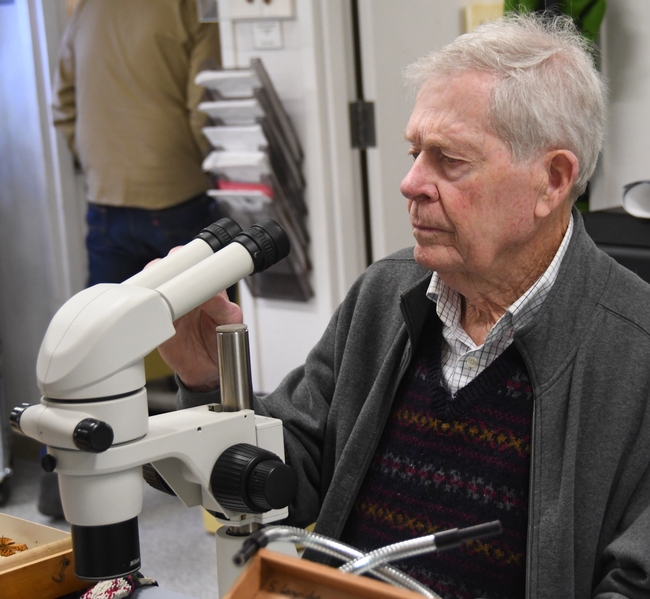
Moths, anything about moths, was the kind of event that Powell loved. He was an associate of the Bohart Museum and a scientific collaborator, identifying scores of insects and attending many of the Leipidopterist Society meetings held there.
The open house, free and family friendly, is set from 7 to 11 p.m., Saturday, July 22 in Room 1124 of the Academic Surge Building, 455 Crocker Lane, UC Davis, campus.
Plans call for scientists to set up their traditionalblacklighting (ultraviolet or UV) display to attract moths and other night-flying insects. Bohart Research Affiliate John DeBenedictus, a retired UC Davis Staff Research Associate, also known as "The Moth Man," usually heads the blacklighting project. De Benedictus received his master's degree in 1988 from UC Berkeley, studying with Powell. "I spent more time in the field with Jerry than any other grad student," he related. "I was privileged to be Jerry's student and lucky to have become his friend."
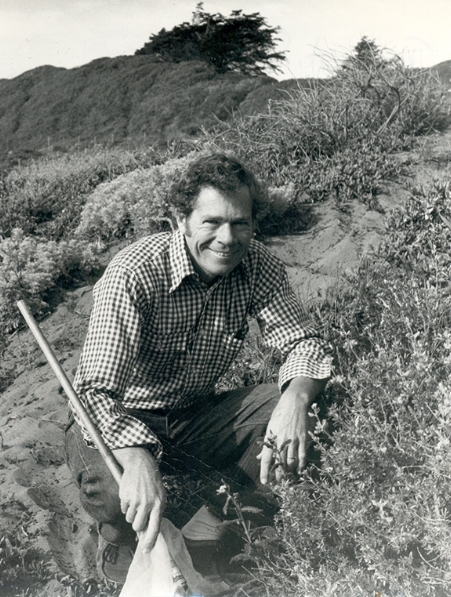
Powell and Paul Opler (1938-2023) co-authored Moths of Western America, published in 2009.
In a tribute to Powell on its website, the Essig Museum posted in part:
"In his teen years he was heavily influenced by Charles 'Harbie' Harbison, who ran the Junior Naturalist Program at the San Diego Museum of Natural History, and sparked an interest in Jerry for butterflies and moths. Seeing his potential, Harbie recommended Jerry for the Entomology program at UC Berkeley, where he received his BS in 1955 and his PhD in 1961. While climbing through the ranks of Junior Entomologist (1961-62), Assistant Entomologist (1962-67), Associate Entomologist (1967-73), Entomologist (1973-94), Lecturer in Entomology (1964-69), Associate Professor (1969-73), and Professor (1973-94) at UC Berkeley, Jerry also became Curator (1972-2018) and Director (1993-1999) of the Essig Museum of Entomology (1972-1999) and Project Leader for the California Insect Survey (1963-1999). Although he retired as Director in 1999, Jerry remained a professor of the Graduate School until 2012 and maintained an active research program in Lepidoptera life histories and systematics until 2018, advising many students along the way. (See more on Essig website.)"
"Jerry's rearing program was the most extensive in the history of the study of New World Microlepidoptera," according to the Essig post. "For over 50 years he and his students processed more than 15,000 collections of larval or live adult Lepidoptera. Resulting data encompass more than 1,000 species of moths, through rearing either field-collected larvae or those emerging from eggs deposited by females in confinement. This total includes more than 60% of an estimated 1,500 species of Microlepidoptera occurring in California."
Powell gained international recognition when he detected the agricultural pest, the light brown apple moth, Epiphyas postvittana, in a ultralight (UV) trap on July 19, 2006 in his backyard in Berkeley.
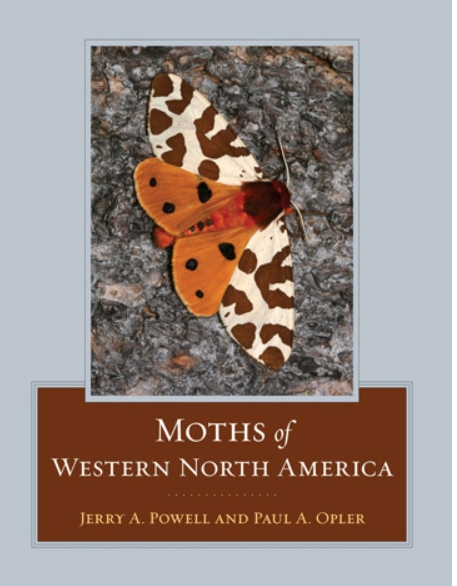
In an email to colleagues on July 9, Peter Oboyski, executive director of the Essig Museum of Entomology, wrote: "With a heavy heart I am sad to report that professor Jerry Powell passed away this weekend. His contributions to our knowledge of California entomology, microlepidoptera, and insect life histories are inestimable, as is the value of the training he provided to his students. As one of those students, I am eternally grateful for the time, energy, and knowledge Jerry shared with me in the museum and the field."
"A consummate field biologist, Jerry's knowledge and interests were broad, allowing him to read landscapes and discover the most interesting and cryptic of species interactions," Oboyski noted. "This is well documented in over 220 publications, but also in the 60+ years of his field notes and rearing records that we are currently digitizing. He is the collector of over 400 holotypes of various insect orders, described over 170 species and 14 genera of moths, and honored by 41 patronyms. He also published papers on Hymenoptera, Coleoptera, Diptera, Dermaptera, and a Nematode. His legacy is impressive and will long be remembered."
Powell described himself as a "MothNut" on his vehicle license plate, and also displayed a sticker, "Larvae on Board."
Attached Images:
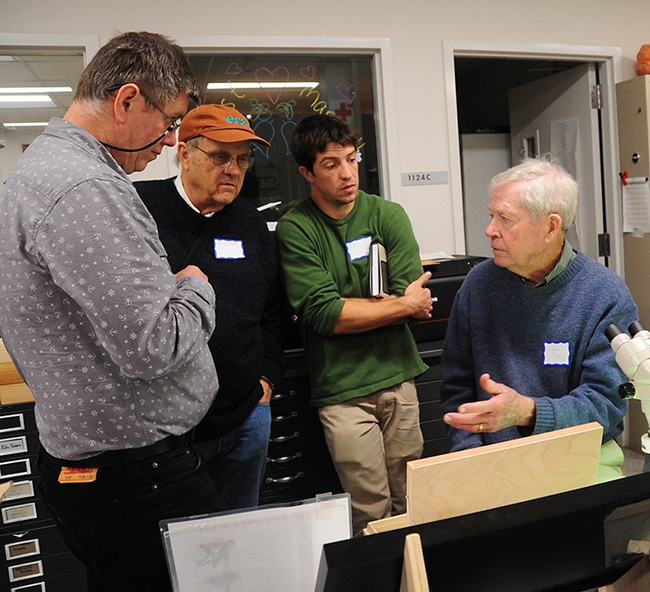
In this 2017 archived photo, Jerry Powell (seated at microscope) talks to colleagues at a Lepidopterist Society meeting at the Bohart Museum of Entomology. From left are entomologist Max Klepikov of Berkeley; UC Davis distinguished professor Don Strong of the Department of Evolution and Ecology; and Eric Lopresti, then a UC Davis graduate student. (Photo by Kathy Keatley Garvey)
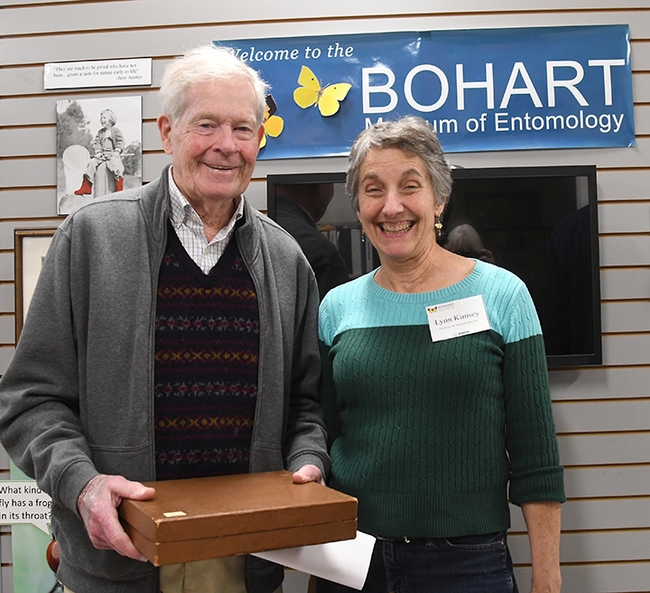
Lynn Kimsey, director of the Bohart Museum of Entomology, with Jerry Powell, a longtime director of the Essig Museum of Entomology. This image was taken Feb. 9, 2013 at a Lepidopterist Society gathering at the Bohart Museum. (Photo by Kathy Keatley Garvey)